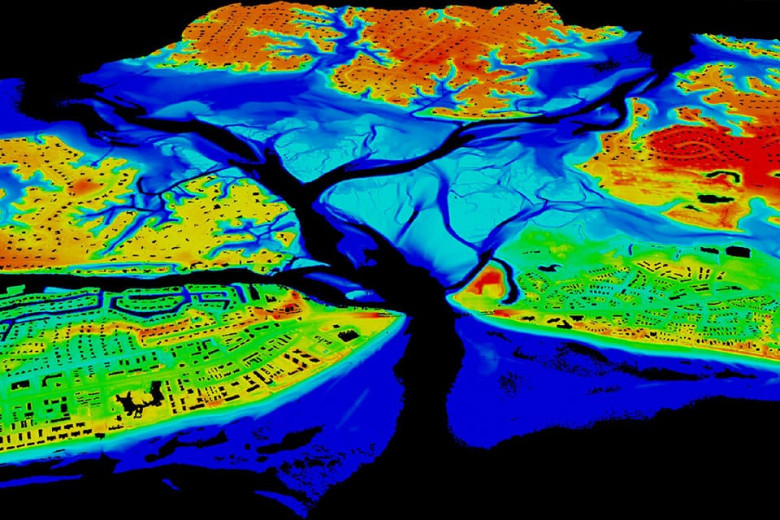views
Analog Photonics and the Evolution of the FMCW LiDAR Market

Introduction
Analog Photonics is at the forefront of Frequency Modulated Continuous Wave (FMCW) LiDAR technology, driving advancements that are reshaping the landscape of autonomous vehicles, robotics, and industrial automation. As the demand for high-precision 3D sensing solutions grows, Analog Photonics continues to leverage its expertise in silicon photonics and LiDAR integration to enhance performance, reduce costs, and improve scalability.
This article explores the strategies, emerging innovations, and developments adopted by Analog Photonics and their impact on the Frequency Modulated Continuous Wave (FMCW) LiDAR Market.
Analog Photonics' Strategy in the FMCW LiDAR Market
1. Silicon Photonics-Based FMCW LiDAR
Analog Photonics specializes in silicon photonics, which enables compact, low-power, and cost-effective FMCW LiDAR systems. By integrating photonic components on a single silicon chip, the company enhances signal processing capabilities while reducing manufacturing complexity.
2. Strategic Partnerships and Collaborations
The company actively collaborates with key industry players, including semiconductor manufacturers and automotive OEMs, to accelerate the adoption of FMCW LiDAR. These partnerships help Analog Photonics scale production and integrate its technology into real-world applications.
3. Focus on Automotive and Industrial Applications
While the automotive industry remains a primary target, Analog Photonics is expanding its reach into industrial automation, smart infrastructure, and robotics. The company’s LiDAR solutions cater to diverse use cases, including precision mapping, warehouse automation, and security monitoring.
4. Cost Reduction and Scalability
Analog Photonics is committed to reducing the cost of FMCW LiDAR through scalable fabrication processes. By leveraging mass-production techniques similar to those used in the semiconductor industry, the company aims to make high-performance LiDAR systems more accessible.
Emerging Innovations in FMCW LiDAR Technology
1. Long-Range Detection and Higher Resolution
FMCW LiDAR systems developed by Analog Photonics offer superior range and resolution compared to traditional time-of-flight (ToF) LiDAR. This enables more accurate object detection, essential for autonomous vehicles and advanced driver-assistance systems (ADAS).
2. Coherent Doppler Sensing for Velocity Measurement
Unlike ToF LiDAR, FMCW LiDAR can directly measure the velocity of objects using the Doppler effect. Analog Photonics' advancements in this area enhance situational awareness for autonomous navigation, reducing false detections and improving safety.
3. Chip-Scale Integration for Compact Design
The integration of photonic and electronic components on a single chip allows for smaller, more power-efficient LiDAR systems. This is particularly beneficial for applications in robotics, UAVs, and portable sensing devices.
4. AI-Driven Signal Processing
Analog Photonics is leveraging artificial intelligence (AI) and machine learning to refine LiDAR signal interpretation. AI algorithms enhance object recognition, classification, and environmental mapping, making LiDAR-based systems more intelligent and responsive.
Developments Shaping the FMCW LiDAR Market
1. Adoption in Autonomous Vehicles
The FMCW LiDAR market is witnessing increased adoption in the automotive sector, with leading manufacturers incorporating the technology into next-generation autonomous driving systems. Analog Photonics is positioning itself as a key supplier in this transition.
2. Integration with Edge Computing
With the rise of edge computing, Analog Photonics is working on integrating LiDAR data processing at the sensor level. This minimizes latency, enhances real-time decision-making, and reduces the reliance on cloud-based computing for autonomous systems.
3. Regulatory and Safety Compliance
As LiDAR becomes a critical component in safety applications, Analog Photonics is actively engaging with regulatory bodies to ensure compliance with global automotive and industrial safety standards. The company is focused on achieving certifications that will facilitate widespread adoption.
4. Expansion into New Markets
Beyond automotive and industrial sectors, Analog Photonics is exploring applications in smart cities, agriculture, and augmented reality (AR). The ability to provide precise depth mapping makes FMCW LiDAR valuable for a wide range of industries.
Conclusion
Analog Photonics is playing a pivotal role in shaping the future of FMCW LiDAR technology. Through strategic partnerships, silicon photonics innovations, and market diversification, the company is driving the adoption of high-performance LiDAR solutions across multiple industries. As demand for real-time 3D sensing continues to grow, Analog Photonics is well-positioned to lead the evolution of LiDAR technology, making autonomous systems safer, smarter, and more efficient.






















Comments
0 comment